The first week of the 2023 NOBULL CrossFit Open was a repeat of Open Workout 14.4. If you’ve been doing the Open long enough, you may have been able to look up your score from 2014 and reminisce a bit. After nine long years, hopefully you are fitter. But if you are like me, maybe you’re just happy to still be getting after it.
Open Test 23.1 is as many reps as possible in 14 minutes of 60 calories on the rower, 50 toes-to-bars, 40 wall-ball shots, 30 cleans, and 20 muscle-ups. Top athletes had the privilege of plugging away through a second round until the clock ran out. For Rx’d athletes without the requisite muscle-ups, it was a race to get through 30 cleans before the clock ran out. Most athletes who haven’t achieved toes-to-bars yet chose to perform the scaled version of the test rather than calling it quits after the 60-calorie row.
Participation by Country
This year we saw an increase in Open participation numbers across the board. But looking at the top 10 countries by participation, we see that some of these countries experienced more growth than others.
The U.S. now represents 41% of Open participation, down from 43% last year. France and the U.K. are still very close in the top 3, swapping places from 2022.
It was a big year of growth for South Korea, and this is the first year it has broken into the top 10. From 2022 to 2023, South Korea jumped from 13th to ninth, with a participation increase of 62%. South Africa got bumped out of the top 10, falling from ninth to 11th.
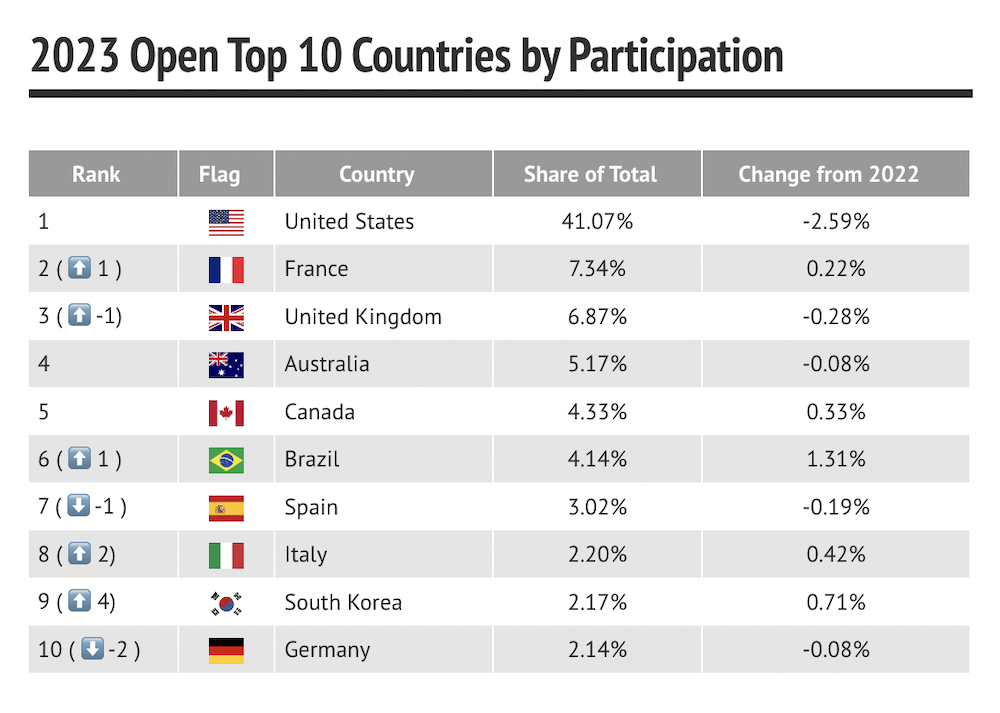
For each week of the Open, we’ll compare how the top 10 countries stacked up against each other. For 23.1, looking at the percentage of athletes who got at least one muscle-up is a great way to compare the relative competitiveness among countries. The Rx’d version of the workout for athletes aged 16-54 contained muscle-ups, so we included all those age groups in the graphics below. Spain had the highest percentage of athletes with muscle-ups at 24%. Looking at the percentage of athletes who did the workout Rx’d, South Korea takes the top spot by a long shot with 87% of athletes performing that version of the workout.

Workout Analysis by Division
The big skill being highlighted this week is the ring muscle-up, and athletes around the world did not disappoint. In individuals aged 18-34, 10% of women and an impressive 38% of men were able to perform at least one muscle-up before time ran out.
The scaled workout was popular this week, with most divisions having more than 30% of their athletes choosing that version. New this year, the adaptive divisions were allowed the opportunity to scale the tests, and this evolution was very well received.

Below we have a chart showing the distribution of scores, divided by movements and rep ranges. For both the men and women, we see a big concentration of athletes who finished the test somewhere on the last 10 cleans of round 1. For Rx’d athletes aged 16-54, 23% of women and 22% of men finished the cleans and weren’t able to get a muscle-up before time was up.

23.1 vs. 14.4
Our community is a lot better at muscle-ups now than it was in 2014. Both men and women did better at the muscle-ups on 23.1 compared to 14.4. For the men, 38% got at least one muscle-up this time compared to 34% last time. Similarly, the women saw an increase from 8% to 10%. This is even more impressive if you realize that nearly three times as many athletes did 23.1 than did 14.4.
During 23.1, more than 9,000 women and 45,000 men performed at least one ring muscle-up.
Looking at the best of the best, it took 212 reps for the men and 189 reps for the women to be in the 99th percentile on 14.4. But on 23.1 athletes needed 244 and 198 reps, respectively, to achieve the same level of performance.

Below are percentile tables for individuals, masters, teenagers, and adaptive divisions with details for each version of the workout. You can see the breakdown of how many reps it took to achieve a particular percentile. For example, for Rx’d women 40-44, a score of 165 reps got you into the 50th percentile.
These percentiles are comparing you against your division and workout version, which is different from your overall division percentile (compared against all versions).
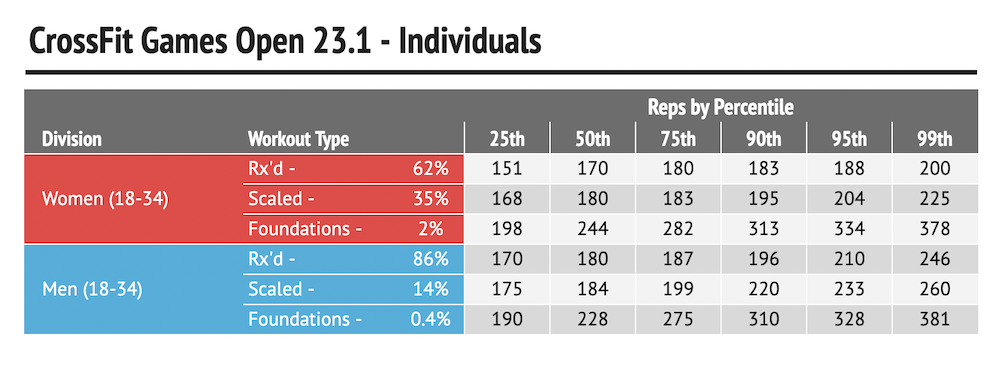
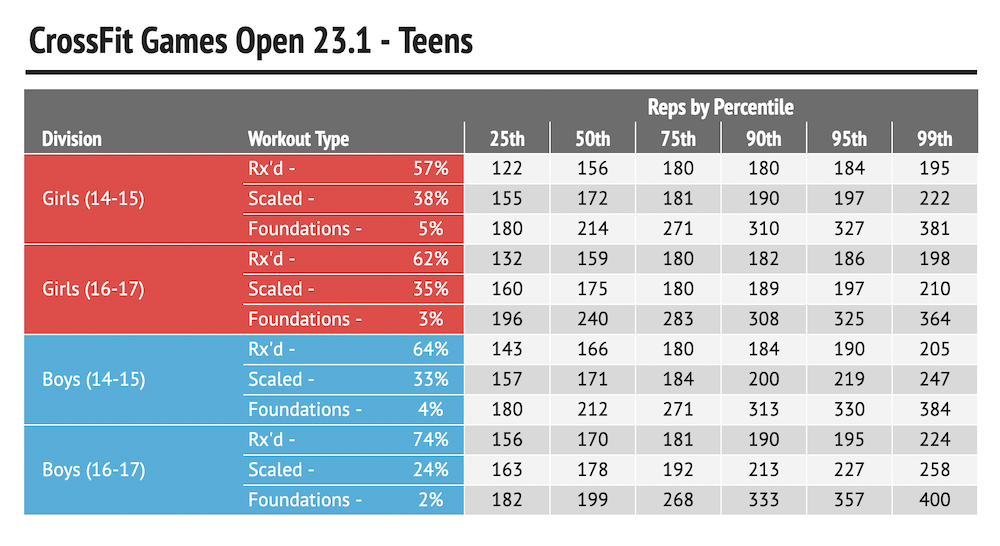
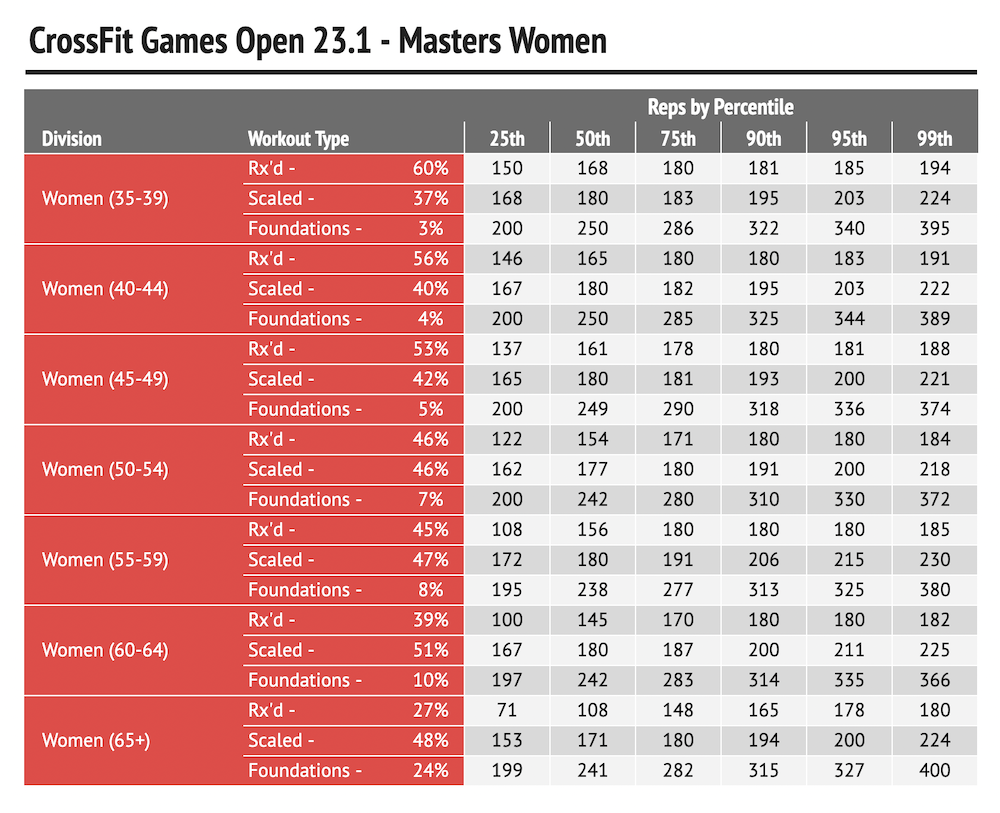
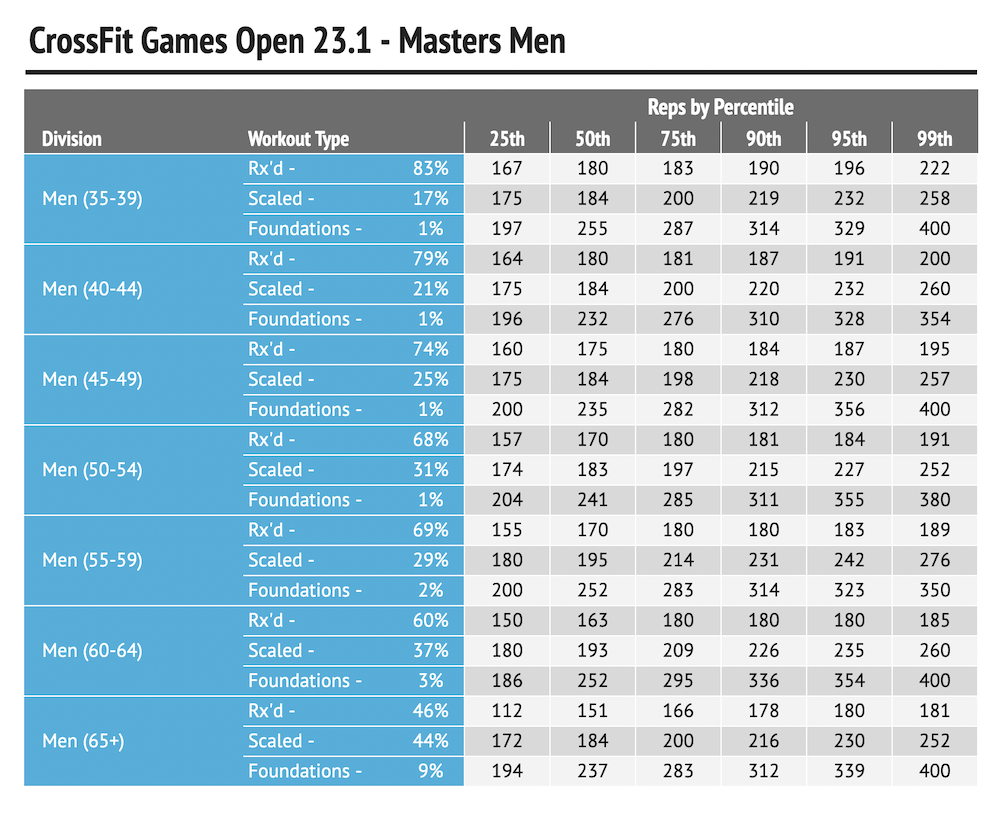
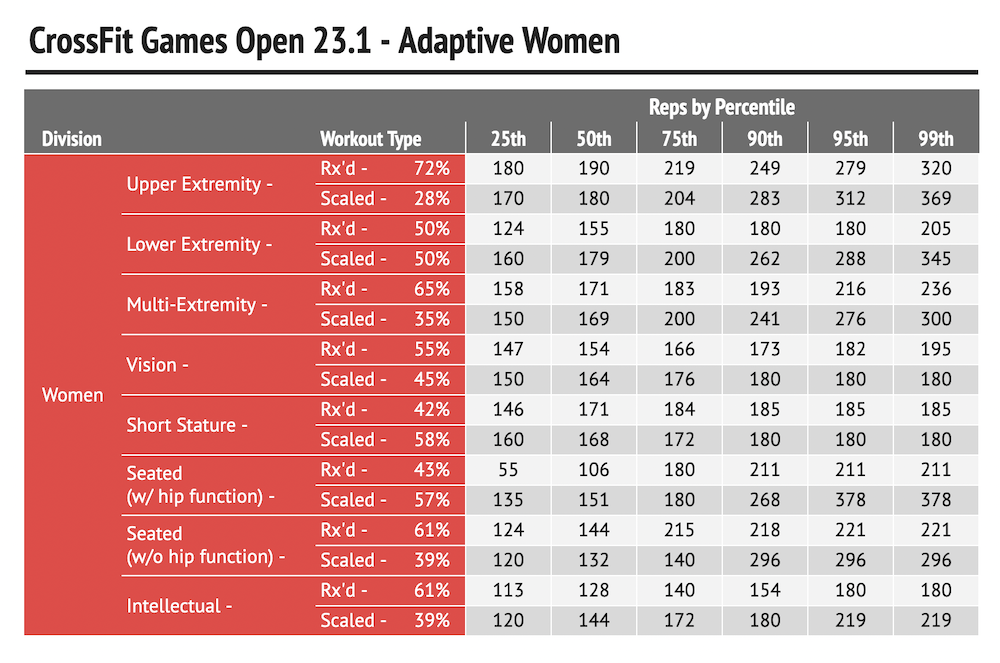
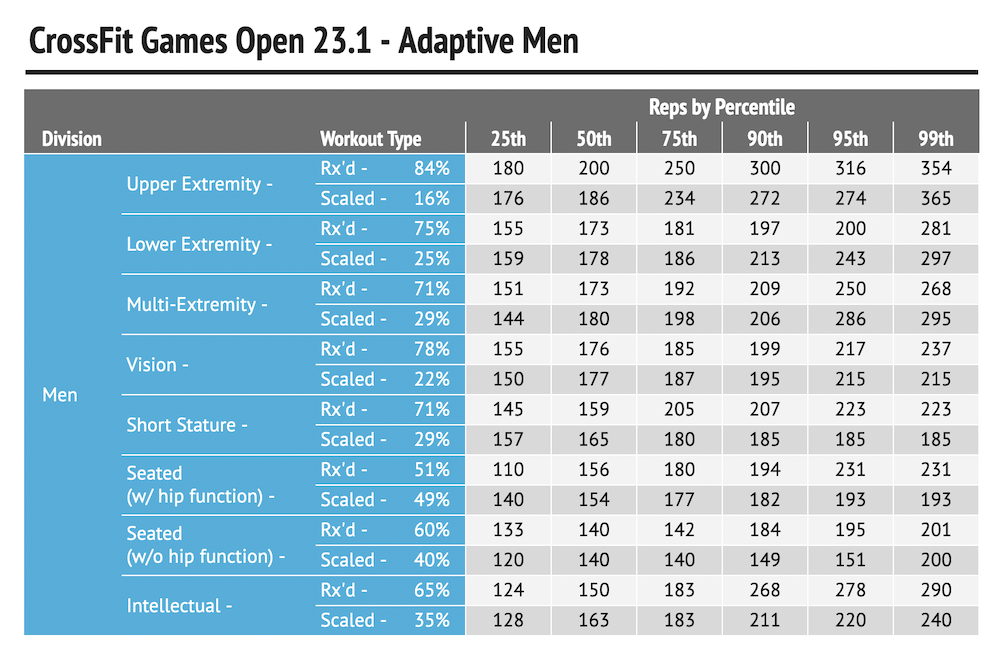
*The data used for this article is from the official CrossFit Open submissions.
btwb is the premier workout-tracking app. Log, plan and analyze your WODs with friends at your CrossFit® box and around the world. All plans come with a 30-day free trial.
